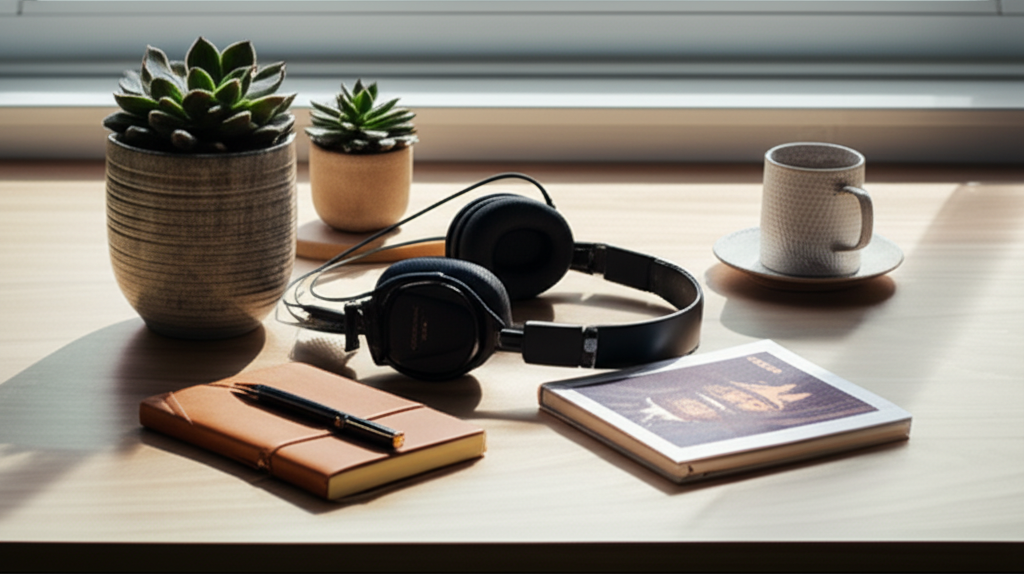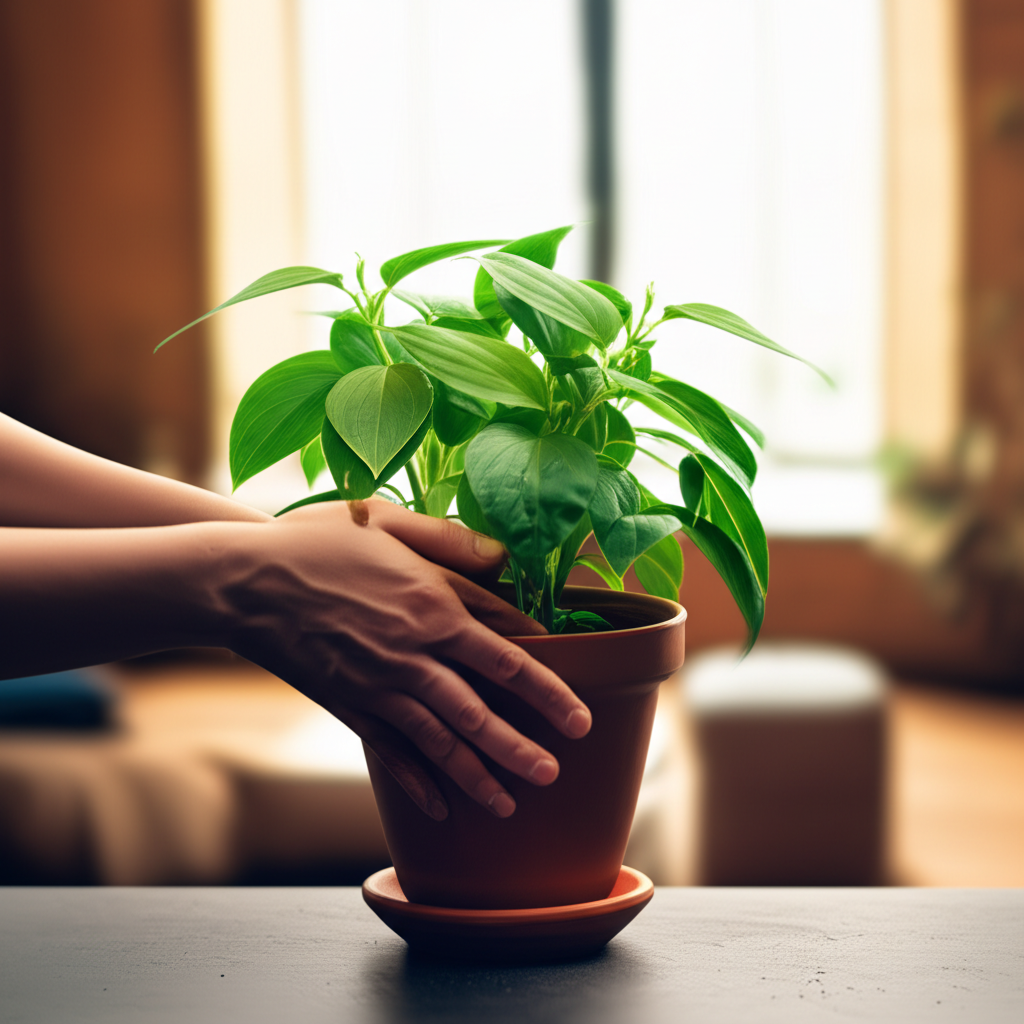Now Reading: Personalized Self-Care Toolkit: Step-by-Step Guide
-
01
Personalized Self-Care Toolkit: Step-by-Step Guide
Personalized Self-Care Toolkit: Step-by-Step Guide

Creating Your Personalized Self-Care Toolkit: A Step-by-Step Guide to Nurturing Your Mental Well-being
Life, dear friend, often feels like a relentless balancing act, full of responsibilities, challenges, and unexpected twists. In this busy dance, it’s so easy to lose sight of one of the most vital aspects of our overall well-being: ourselves. We often hear about “self-care” and might picture luxurious spa days or long bubble baths. While those can certainly be wonderfully indulgent, true self-care goes much deeper. It’s not about fleeting indulgence; it’s about intentional, personalized strategies designed to protect, nurture, and gently support your mental health and overall well-being.
So, what exactly is a personalized self-care toolkit? Imagine it as your very own curated collection of accessible techniques, comforting practices, and thoughtful items, all chosen by *you*, for *you*. It’s a proactive resource designed to help you navigate everyday stressors, manage anxiety, prevent burnout, and build incredible emotional resilience. Think of it: having quick access to a calming playlist, a specific journaling prompt that helps you process feelings, a gentle stretching routine, or even a soothing herbal tea blend, all ready when you need them. Having these tailored tools at your fingertips can significantly enhance your quality of life, transforming reactive moments of overwhelm into opportunities for intentional self-support and practical stress relief.
In this comprehensive guide, we’ll walk you through the simple, yet profound, steps to build your very own self-care toolkit. As we embark on this journey together, I invite you to gently reflect on what truly brings you peace, energy, and joy. What might your unique toolkit hold? We’ll explore essential categories, share practical ideas, and discuss how to make this toolkit a living, breathing part of your daily life. Get ready to empower your well-being journey and discover new ways to cultivate inner peace!
Why a Personalized Self-Care Toolkit Matters for Your Mental Health
You might be thinking, “Why can’t I just use a generic list of self-care ideas?” The answer lies in the beautiful uniqueness of *you*! Here’s why a custom approach to building your mental health toolkit is so incredibly impactful:
- Addresses Your Unique Needs: What truly soothes one person might not resonate with another. Your stressors, coping mechanisms, and sources of joy are entirely your own. A personalized approach ensures your toolkit truly supports your specific needs, offering tailored coping strategies rather than a one-size-fits-all solution.
- Proactive vs. Reactive Wellness: This isn’t just for crisis intervention. It’s a proactive strategy to maintain your well-being, helping you keep your cup fuller on regular days so you have more to draw from when challenges inevitably arise. It’s a wonderful tool for burnout prevention and stress management long before things escalate, boosting emotional resilience.
- Fosters Self-Awareness & Self-Compassion: The gentle process of identifying what genuinely helps you deepens your understanding of your inner world. It encourages you to listen to your body and mind, promoting profound self-compassion and kindness toward yourself as you navigate your personal growth journey.
- Reduces Decision Fatigue: When you’re feeling distressed or overwhelmed, your capacity for making decisions often plummets. Having pre-selected, easily accessible tools prevents you from having to brainstorm solutions in the moment, making it simpler to engage in supportive practices for immediate calm.
- Empowerment: Building your own self-care kit provides a powerful sense of control and agency in managing your mental health. It reminds you that you have the innate power to influence your emotional state and cultivate inner peace, even amidst life’s chaos.
The Foundational Steps to Building Your Unique Toolkit
Creating your personalized toolkit is a truly insightful journey of self-discovery. Let’s explore the foundational steps to lay a strong, supportive groundwork.
Step 1: Gentle Self-Reflection & Identifying Your Needs
This is arguably the most crucial step, so allow yourself some grace and patience. Grab a journal or a notebook and find a quiet moment for introspection. There’s no right or wrong answer here, just honest, compassionate observation. This deep dive is vital for your personalized self-care plan and understanding your emotional landscape.
- What truly triggers stress or discomfort for you? Think about common scenarios, emotions, or situations that tend to deplete your energy or evoke negative feelings. Is it financial worry, social anxiety, work pressure, or unexpected changes? Identifying personal triggers is the first step towards managing daily stress more effectively.
- What activities genuinely bring you calm, energy, or joy? Cast a wide net. Think back to times you felt truly at peace, energized, or simply content. It could be listening to music, spending time in nature, cooking, reading, or connecting with a cherished friend.
- Consider the beautiful dimensions of holistic self-care: To ensure a comprehensive approach to your self-care plan, think about how you can support yourself across various aspects of your life. It’s about balance, not perfection:
- Physical: Sleep, nourishing food, gentle movement, hydration, comforting touch.
- Emotional: Processing feelings, expressing emotions, practicing self-compassion, emotional regulation techniques.
- Mental: Learning, engaging your mind, cognitive breaks, positive self-talk, intellectual stimulation.
- Social: Meaningful connection with others, setting healthy boundaries, nurturing relationships.
- Spiritual: Connecting with your values, purpose, nature, or a higher power (if applicable).
- Environmental: Your physical surroundings, decluttering, spending time in soothing natural spaces.
- Journaling for self-discovery: Use prompts like: “When do I feel most overwhelmed or drained?” “What truly makes me feel recharged?” “What helps me slow down and find peace?” “What makes me laugh genuinely?” “What do I need more of in my life right now to feel balanced?” This deep dive is vital for understanding your unique needs.
Step 2: Setting Realistic & Achievable Goals for Sustainable Self-Care
Once you have a clearer picture of your needs, it’s time to set intentions. Remember, the aim is to empower you, not overwhelm you. Start small, be kind to yourself, and celebrate every tiny step forward.
- Embrace “tiny habits”: Instead of aiming for an hour of meditation daily, try for 5 minutes. Consistency beats intensity every single time when building sustainable self-care habits.
- A gentle guide on setting SMART goals (Specific, Measurable, Achievable, Relevant, Time-bound):
- Specific: “I will do a 5-minute guided breathing exercise.”
- Measurable: “I will incorporate 10 minutes of mindfulness daily to reduce anxiety.”
- Achievable: “I will take a 15-minute walk three times a week.”
- Relevant: “This will help me feel more energized and focused, supporting my overall well-being.”
- Time-bound: “By the end of the month, I aim to meditate for 5 minutes every morning.”
- Align goals with your personal values: When your self-care practices align with what truly matters to you (e.g., peace, creativity, connection, personal growth), you’ll find greater motivation and sustained practice.
Step 3: Brainstorming & Curating Your Toolkit Items/Strategies
Now for the truly fun part – bringing your toolkit to life! Based on your thoughtful self-reflection, start listing potential items and practical strategies. Remember, there’s no “right” or “wrong” – what matters is what genuinely resonates with you. This is where you integrate both tangible items and crucial non-tangible “tools” like mindset shifts and healthy boundaries, creating your personal coping strategies.
- Think about activities for different moods or needs:
- Calming for anxiety or overwhelm: What helps you ground yourself and find immediate calm?
- Energizing for lethargy or fatigue: What gives you a gentle, natural boost?
- Distracting for rumination or difficult thoughts: What helps you shift focus constructively?
- Connecting for loneliness or isolation: What fosters a sense of belonging or comfort?
- Processing for strong emotions: What helps you move through feelings rather than suppress them, offering emotional regulation?
- The “five senses” approach: A fantastic, simple framework for brainstorming sensory-based tools to soothe and regulate your nervous system, promoting quick stress relief.
- Sight: Beautiful photos, inspiring art, a favorite plant, a calming color, a comforting image.
- Sound: A calming playlist, nature sounds, instrumental music, binaural beats for focus, a favorite podcast.
- Touch: A soft blanket, a stress ball, a weighted item, smooth stones, comforting hand lotion.
- Smell: Essential oils (lavender for relaxation, citrus for uplift), a scented candle, your favorite tea, the scent of fresh air.
- Taste: A calming herbal tea, a specific comforting snack (e.g., a piece of dark chocolate), a favorite warm beverage.
- Don’t forget the incredibly powerful non-tangible tools: These are just as, if not more, powerful for mental clarity and well-being:
- Mindset shifts: Affirmations like “This too shall pass,” “I am enough,” “Progress, not perfection,” “I am safe.”
- Self-compassion practices: Acknowledging your feelings without judgment, offering yourself the same kindness you’d offer a dear friend.
- Boundary setting: Learning to say “no” gently but firmly, protecting your precious time and energy.
- Cognitive reframing: Challenging negative thought patterns and finding a more balanced perspective.
- Deep breathing exercises: Simple techniques you can do anywhere, anytime, for immediate calm.
- Mindfulness for beginners: Basic practices to bring you into the present moment.
Essential Categories & Ideas for Your Self-Care Toolkit
Here are some ideas categorized by the beautiful dimensions of self-care we discussed. Remember, these are starting points – feel free to adapt and personalize them to your unique preferences!
Physical Well-being
- Movement: A gentle stretching routine, a short walk outdoors (even 10 minutes!), a favorite dance song, yoga poses for stress relief.
- Sensory Comfort: A small stress ball or fidget toy, an extra soft blanket, a weighted item (lap pad or small blanket), fuzzy socks, an eye mask.
- Nourishment & Hydration: Your favorite calming herbal tea bags, healthy go-to snacks (nuts, fruit), a visually appealing water bottle to encourage consistent hydration.
- Rest & Relaxation: Soft earplugs, sleep-inducing essential oils (lavender, chamomile) for diffusing or applying gently.
Emotional Well-being
- Processing Emotions: A dedicated journal for free-writing or guided prompts, basic art supplies (colored pencils, small sketchbook) for expressing feelings visually, a list of emotions to help identify what you’re truly feeling.
- Self-Compassion: Printed affirmations tailored to your needs (“I am doing my best,” “I am worthy of care”), a pre-written letter to yourself from a calm, supportive perspective, photos of loved ones or pets that bring you comfort and a smile.
- Comforting Scents: A rollerball with your favorite essential oil blend, a small scented candle, a comforting hand lotion with a pleasant aroma.
Mental Well-being
- Mindfulness & Presence: Access to guided meditation audio (via app or recording), a set of simple breathing exercise cards, a glitter jar (a soothing sensory tool for focus and calm), a short body scan meditation.
- Cognitive Engagement/Distraction: A small puzzle book (crossword, sudoku), a favorite inspiring book or a short story collection, a curated podcast list for different moods, engaging brain teasers, a list of creative outlets.
- Learning & Growth: A list of documentaries to watch, resources for a skill you want to learn, a collection of inspirational quotes or poems that resonate deeply.
Social Well-being
- Connection Tools: A quick reference list of supportive friends, family members, or a mentor you can call or text; pre-drafted text messages for reaching out when you’re feeling low; small stationery for writing a quick, heartfelt note to someone.
- Planning Aids: A mini-calendar with planned social engagements or a gentle reminder to schedule one.
Spiritual Well-being (Optional – choose what truly resonates with you)
- Gratitude Practice: A small gratitude journal, a list of things you’re grateful for, or gratitude prompts.
- Nature Connection: Photos of serene natural landscapes, a small natural object (a smooth stone, a seashell), a list of local green spaces or parks to visit for refreshing walks.
- Reflection: Short inspirational readings, a set of reflective questions for contemplation, a rosary or prayer beads (if applicable), a quiet space for meditation.
Assembling & Maintaining Your Toolkit for Ongoing Well-being
Once you’ve brainstormed your items, it’s time to put it all together and ensure it serves you effectively. Think of this as setting up your personal oasis of calm.
Choose Your “Container”
- Physical Options: A beautifully decorated box, a cozy basket, a small bag, or even a dedicated drawer. The key is to make it feel inviting and easily accessible.
- Digital Options: A dedicated folder on your phone or computer, a playlist of calming music, a curated list of helpful apps, a private Pinterest board, or a special note in your phone.
Make it Accessible
There’s no point in having a toolkit if you can’t easily reach it when you need it most. Keep your physical toolkit in a visible, easy-to-access location, like your bedside table, desk, or living room. Ensure your digital tools are just a few taps away, making them practical stress relief techniques you can use anytime, anywhere.
Flexibility is Key
Your self-care toolkit is a living, breathing document, not a rigid prescription. What works one day might not work the next, or your needs might gently shift over time. Embrace its fluid nature! Consider creating different “mini-kits” or mentally categorizing items for various scenarios, promoting adaptive self-care practices:
- Low-capacity days: Simple, low-effort activities (e.g., listening to a podcast, gentle stretching in bed, deep breathing for anxiety).
- Medium-capacity days: Activities that require a bit more engagement (e.g., journaling for mental clarity, a short walk, a specific craft).
- High-capacity days: Self-care that can be more involved and restorative (e.g., trying a new recipe, volunteering, a longer hike for personal growth).
Regular Review & Update
Periodically, perhaps once a month or quarter, take a moment to gently assess what’s working for you. Perhaps a certain essential oil no longer brings comfort, or a specific activity feels draining. It’s perfectly okay to remove items that no longer serve you and add new ones as you discover new interests, needs, or effective coping strategies. Think of it as a loving spring cleaning for your well-being!
Practice & Consistency
The true magic of a toolkit isn’t just in its creation, but in its consistent use. Even in small doses, integrate self-care into your daily life. Building these habits strengthens your capacity to handle challenges before they escalate. Don’t wait until you’re at your breaking point; use your tools proactively, even for just 5-10 minutes a day, to maintain your mental wellness and build emotional resilience.
Beyond the Toolkit: Integrating Self-Care into Daily Life for Holistic Well-being
Your personalized self-care toolkit is a phenomenal resource, a true gem, but true self-care is a continuous lifestyle, not just something you pull out for “bad days.” It’s about building healthy habits and intentional actions that support you around the clock, fostering holistic well-being.
- Self-care as a continuous lifestyle: Gently shift your mindset from self-care being a “fix” to being a fundamental, non-negotiable part of your everyday routine. Just like brushing your teeth, it’s something you do consistently to feel your best.
- Strategies for prioritizing self-care amidst busy schedules: Schedule it! Block out time in your calendar for self-care activities, even if it’s just 15 minutes. Learn to say “no” to non-essential commitments, delegate tasks when possible, and remember that taking care of yourself makes you more effective, present, and compassionate in all other areas of your life. This is key for self-care for busy people.
- Importance of listening to your body and mind’s signals: Pay attention to the subtle cues – fatigue, irritability, difficulty focusing, a feeling of being wound up. These are gentle signals that your body and mind are asking for support. Your toolkit helps you respond lovingly and proactively, supporting your personal growth journey.
- When to seek professional support: Remember that a self-care toolkit is a powerful supportive tool, but it’s not a replacement for professional therapy or medical intervention when needed. If you’re consistently struggling with your mental health, experiencing severe symptoms of stress or anxiety, feeling overwhelmed to the point where daily functioning is difficult, or notice a persistent low mood, please reach out to a qualified mental health professional. It’s a sign of immense courage and strength to seek help, and it’s an act of profound self-care.
Conclusion
Creating your personalized self-care toolkit is an incredibly empowering act of self-love and a vital step in your personal growth journey. It provides you with a tangible, accessible way to nurture your mental well-being, manage daily stress, and build resilience in the face of life’s inevitable challenges. It’s about equipping yourself with the unique strategies that truly resonate with you, transforming how you navigate your inner world and cultivate inner peace.
So, take that first, gentle step. Start small, be kind to yourself throughout the process, and embrace the beautiful journey of discovering what truly supports your unique needs. You deserve this profound care, and your well-being is absolutely worth investing in. We’re here cheering you on!
What are some of your favorite go-to self-care tools or tips for managing daily stress and boosting emotional resilience? We’d love for you to share them with our community in the comments below!




















